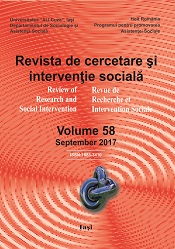Psychosocial Outcomes in Home-Based Cardiovascular Rehabilitation Programmes
Psychosocial Outcomes in Home-Based Cardiovascular Rehabilitation Programmes
Author(s): Lucia Corina Dima-Cozma, Doina-Clementina Cojocaru, Florin MituSubject(s): Social Sciences
Published by: Expert Projects Publishing
Keywords: psychosocial outcomes; home-based cardiac rehabilitation; centrebased cardiac rehabilitation; quality of life; self-perceived stress;
Summary/Abstract: Exercise-based cardiac rehabilitation has been introduced in medical practice many years ago, initially only as center-based rehabilitation. It is part of the activities for the secondary prevention of cardiovascular diseases and has been effective in reducing cardiovascular morbidity and mortality. Cardiac rehabilitation programs are commonly used in patients who have had an ischemic event or a myocardial revascularization procedure and in patients with heart failure of various etiologies. However, participation rate in center-based rehabilitation programs is low, especially by the elderly or women, and depending on the variability of the symptoms of cardiovascular disease. Alternative models are mainly based on telerehabilitation techniques and are grouped under the name of home-based rehabilitation. Our study aimed at reviewing the main randomized clinical trials published from January 2012 to December 2016, selected from the MEDLINE, Web of Science and Science Direct databases that compared home-based with center-based rehabilitation or usual care, and were focused on psychosocial outcomes. In the studied articles, the mental and social components were assessed by completing upon enrollment and at various times during reassessment quality of life questionnaires, questionnaires for depression and anxiety and self-perceived stress. Several studies highlight the superiority of home-based rehabilitation in hemodynamically stable patients who wanted to resume their social and professional activities. The outcomes are generally similar in terms of increasing exercise capacity and superior in terms of quality of life, reducing anxiety and depression, or socio-professional reintegration.
Journal: Revista de Cercetare şi Intervenţie Socială
- Issue Year: 2017
- Issue No: 58
- Page Range: 100-111
- Page Count: 12
- Language: English

